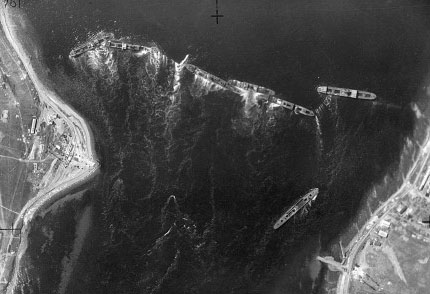
During the Second World photographic reconnaissance units based in Scotland were responsible for some of the most significant reconnaissance missions of the war. This included the famous sortie flown out of RAF Wick by Flying Officer Suckling that located the German battleship Bismarck in a Norwegian fjord and led to its sinking days later. To prepare for missions over occupied Europe, extensive training flights were made around the United Kingdom and over 6500 of the aerial photographs taken over Scotland are now accessible on this website.
The photographs were taken between 1940 and 1945 and contain unique images of Scotland at war. Highlights include commando training camps, merchant shipping, coastal defences and radar stations. These photographs were formerly held by M Section of the Allied Central Interpretation Unit, RAF Medmenham, who were responsible for aerial photographs of the United Kingdom during the Second World War.
Clydebank
This image shows the Singer Sewing Machine factory on 27 August 1942, at this time being utilised for war production. Tenements have been cleared in streets to the north and east of the works following bomb damage from German raids on Clydebank during 1941.
|
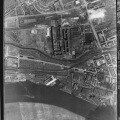 |
Dundee docks
During the Second World War, Dundee was home to submarines from several Allied nations. One such vessel is seen moored to a quayside in Dundee in this image taken on 2 July 1943.
|
 |
Inchkeith coastal defences
Inchkeith has been a major element in the network of Firth of Forth defences for much of its history. During the Second World War, its capabilities were strengthened by the addition of several heavy-calibre guns; the emplacements for two are visible at lower right in this image, taken on 2 October 1941.
|
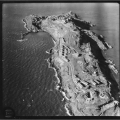 |
Inveraray Commando Training Centre
The commando training camp in the grounds of Inveraray Castle was one of several set up in Scotland to train elite troops for special operations in occupied Europe. It is seen here on 3 June 1941.
|
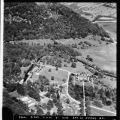 |
HMS Dinosaur
This Landing Ship Tank (LST) was photographed after disembarking armoured vehicles and towed artillery pieces onto an Ayrshire beach, on 12 March 1945. Several military formations were based in Ayrshire and the Clyde estuary during the Second World War, including Commando units, which specialised in amphibious landings. HMS Dinosaur, near Troon, was the headquarters for tank landing craft training operations.
|
 |
Troops on manoeuvre
Elements of a Company of infantry soldiers are visible in this photograph, moving westward in column formation in section groups along a minor road. One soldier at the rear of the column is mounted on a motorcycle, while a group of four soldiers positioned between two Platoon-strength groups may be a Command or machine-gun support group. This image was taken by a Lysander aircraft of 614 Squadron on 12 September 1940.
|
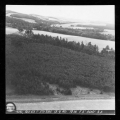 |
Kirk Sound blockships
This image shows blockships between Lamb Holm and Mainland, Orkney, sunk to impede access to the Royal Navy anchorage in Scapa Flow during the Second World War. It was through this particular channel that the German submarine U-47 penetrated Scapa Flow and sank the battleship HMS Royal Oak in 1939. This photograph was taken over two years later, on 4 July 1942, and shows construction works for the Churchill No.1 Barrier which superseded the blockships.
|
 |
RAF Leuchars
Elements of 1 PRU and 540 Squadron were based at Leuchars, Fife, during the Second World War and operated in the photographic reconnaissance role. Several aircraft types are visible in this image, including PRU Spitfires and Mosquitos and three civilian BOAC-operated Lockheed Lodestars, used for flights to neutral Sweden. Disruptive-pattern paint schemes have been applied to hangars and runways in an attempt to break up their distinctive, straight edges.
|
 |
RAF Wick
RAF Wick was used as a forward operating base for PRU Spitfires tasked with covering Scandinavia, until the longer-ranged Mosquito came into service. It was from here that Pilot Officer Michael Suckling flew to Norway and found the German pocket-battleship Bismarck on 21 May 1941.
|
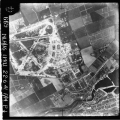 |
Bismarck
The photograph that sank a battleship. This most famous of the early reconnaissance sorties was flown from RAF Wick and discovered the hiding place of the German pocket-battleship Bismarck, in Grimstadfjord, Norway, on 21 May 1941. The ship was sunk by the Royal Navy six days later.
|
 |
View all M-Section images of Scotland












